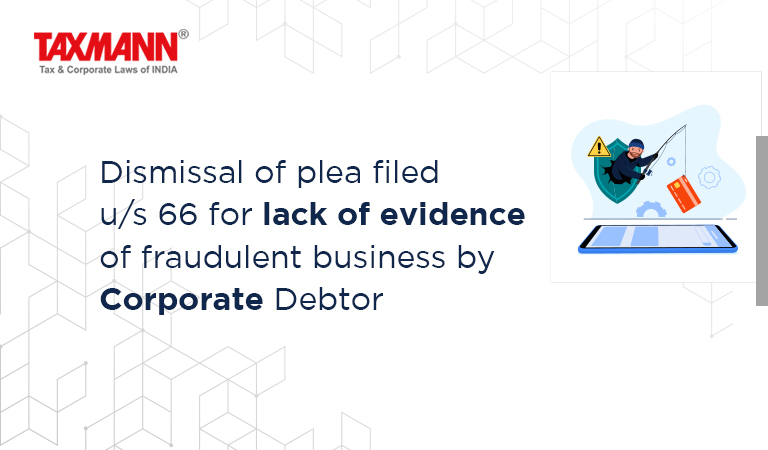Dismissal of plea filed u/s 66 for lack of evidence of fraudulent business by Corporate Debtor
- Blog|News|Insolvency and Bankruptcy Code|
- 2 Min Read
- By Taxmann
- |
- Last Updated on 23 December, 2022

Case Details: Regen Powertech (P.) Ltd. v. Wind Construction (P.) Ltd. - [2022] 145 taxmann.com 383 (NCLAT-Chennai)
Judiciary and Counsel Details
-
- M. Venugopal, Judicial Member & Naresh Salecha, Technical Member
- S.R. Raghunathan & B. Thilak Narayanan, Advs. for the Appellant.
Facts of the Case
In the instant case, the CIRP was initiated against the corporate debtor and the appellant was appointed as Resolution Professional (RP). Thereafter, the appellant filed an application u/s 66 of the IBC before the Adjudicating Authority (NCLT) on the ground that the director of the corporate debtor remitted a sum of Rs. 70.82 crores from the bank account of the corporate debtor into the bank account of the respondent – R1.
This was a fraudulent transaction carried out to defraud creditors of the corporate debtor. The appellant submitted that the respondents were liable to contribute a sum of Rs. 75.63 crores together with 18% interest to the assets of the corporate debtor.
However, the National Company Law Tribunal (NCLT) vide impugned order dismissed the said application on the ground that the appellant failed to prove the dishonest intention of respondents to defraud creditors. Further, no documentary proof had been filed in support of the same.
Thereafter, an appeal was made to the National Company Law Appellate Tribunal (NCLAT) against the order passed by the National Company Law Tribunal (NCLT).
The appellant contended that the Adjudicating Authority had committed an error in not appreciating the conduct of the respondents in diverting the receivables of the corporate debtor which were specifically charged to the creditors of the corporate debtor.
NCLAT Held
The NCLAT held that since there were no convincing tangible/documentary materials to fortify the plea of the appellant that the business of the corporate debtor was carried out by the respondents with a dishonest intention and to defraud creditors, the order passed by NCLT was free from any legal infirmity.
Consequently, the appeal was to be dismissed.
List of Cases Reviewed
-
- Regen Powertech (P.) Ltd. v. Wind Construction Ltd. [2022] 145 taxmann.com 382 (NCLT – Chennai) (para 38) affirmed [See Annex].
Disclaimer: The content/information published on the website is only for general information of the user and shall not be construed as legal advice. While the Taxmann has exercised reasonable efforts to ensure the veracity of information/content published, Taxmann shall be under no liability in any manner whatsoever for incorrect information, if any.

Taxmann Publications has a dedicated in-house Research & Editorial Team. This team consists of a team of Chartered Accountants, Company Secretaries, and Lawyers. This team works under the guidance and supervision of editor-in-chief Mr Rakesh Bhargava.
The Research and Editorial Team is responsible for developing reliable and accurate content for the readers. The team follows the six-sigma approach to achieve the benchmark of zero error in its publications and research platforms. The team ensures that the following publication guidelines are thoroughly followed while developing the content:
- The statutory material is obtained only from the authorized and reliable sources
- All the latest developments in the judicial and legislative fields are covered
- Prepare the analytical write-ups on current, controversial, and important issues to help the readers to understand the concept and its implications
- Every content published by Taxmann is complete, accurate and lucid
- All evidence-based statements are supported with proper reference to Section, Circular No., Notification No. or citations
- The golden rules of grammar, style and consistency are thoroughly followed
- Font and size that’s easy to read and remain consistent across all imprint and digital publications are applied



 CA | CS | CMA
CA | CS | CMA
